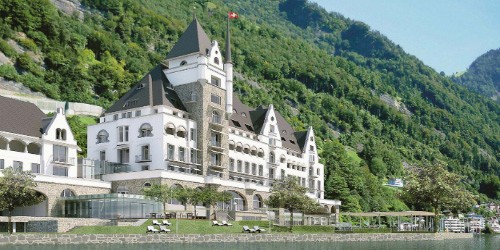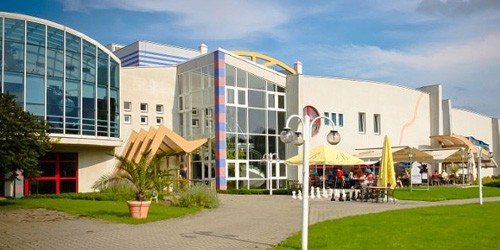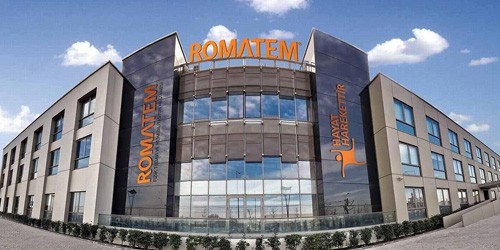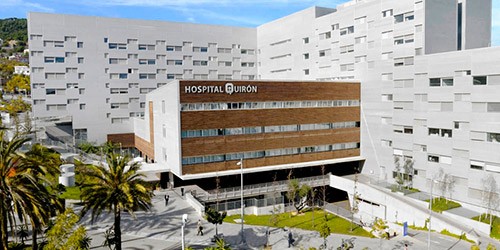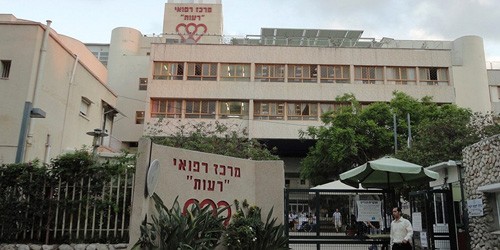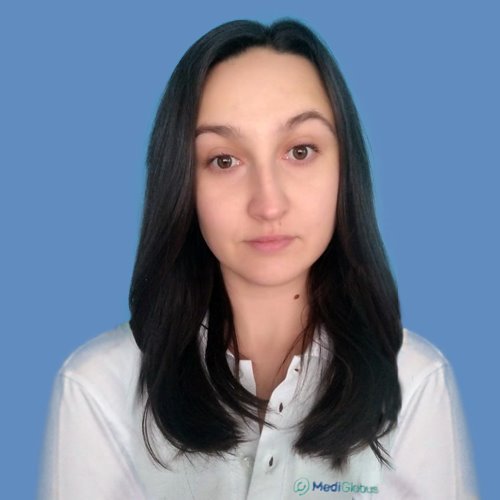1. Degenerative spine diseases |
2. Popular disease control methods |
3. Rehabilitation measures after treatment |
4. Leading clinics |
Degenerative spine diseases are chronic conditions characterized by gradual damage to structures of the spinal column. They are manifested by the development of pain and neurological deficit. Without timely treatment, the condition steadily worsens. About 80% of all adults after 45 have some kind of degenerative changes in the spine. To learn how to deal with such diseases and where it is best to do it abroad, read our article.
Listen to the article:
What are degenerative diseases of the spine?
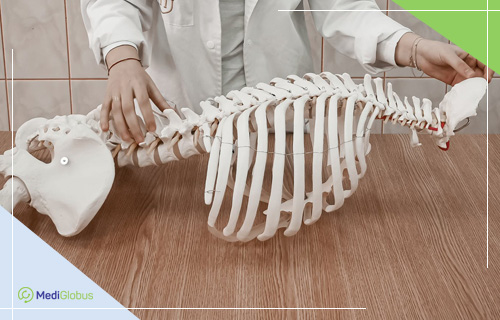
Degenerative changes in the spine involve a gradual loss of the normal structure and function of the spinal column. They are usually caused by the natural ageing process, but can also be the result of trauma, tumours, infections, arthritis, etc.
Intervertebral disc herniation is one of the most common degenerative pathologies of the spine. It accounts for about 60% of all spinal diseases.
However, many other degenerative diseases can cause mobility problems, soreness, weakness and numbness in the extremities, and other symptoms. These conditions usually require medical monitoring and treatment. These diseases include:
Stenosis – narrowing of the spinal canal or nerve foramen, leading to weakness and numbness in the extremities, pain, and other complications;
Spinal curvatures (kyphosis, lordosis, and scoliosis);
Diffuse idiopathic skeletal hyperostosis – a disease characterized by the excessive bone formation and permanent destruction of soft tissue structures along the front and side of the spine;
Spondylitis – inflammation of the joints of the spine, which can occur with acute damage to ligaments and tendons, as well as systemic inflammatory diseases (such as Bechterew disease);
Osteoporosis – decrease in strength and bone density of the spinal column;
Disc degeneration may include such pathologies as protrusion, osteophyte formation, loss of height, or drying of the disc.
Treatment of dystrophy and degenerative changes in the spine
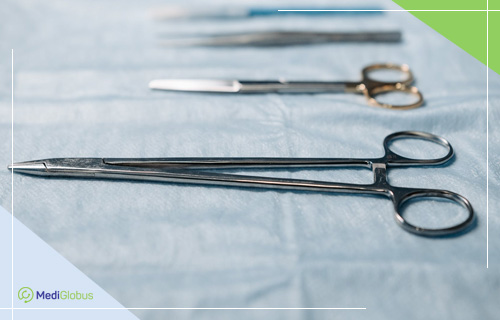
Degenerative diseases of the spine vary greatly in their manifestations. Signs of the disease depend on the localization and type of degenerative changes. Some pathologies do not cause any symptoms, while others may cause disability. That is why there is a wide range of treatment methods.
Many spine diseases do not require surgical treatment but need constant monitoring, drug therapy, physical therapy, a healthy diet and other conservative ways of correction.
In cases of moderate to severe disease, consultation with a neurosurgeon and surgery may be required. The type of procedure is determined by the specific pathology and its stage of progression. Intervention is considered when symptoms do not go away after previous treatment and neurological deficits are significant.
Surgery can relieve pain, prevent further damage to the structures of the spinal column and spinal cord, and improve the patient’s quality of life. Among the most common surgical options for dystrophic and degenerative changes are:
Laminectomy
Removal of a small amount or all of the bone plate (lamina), which is located at the back of the affected vertebra. This provides an opportunity to relieve pressure on the spinal cord and nerves, restore blood flow and relieve pain. Laminectomy is recommended for intervertebral hernia, osteophytes, spinal canal stenosis, and other degenerative changes in the spine with severe symptoms. The operation is performed openly (through a 4-6 cm incision) and mini-invasively (using microsurgical instruments inserted through 3-4 punctures). It lasts 1-3 hours and involves general anaesthesia.
Discectomy
A discectomy is a partial or complete removal of an intervertebral disc. It allows the doctor to remove pressure from the spinal cord and nerve roots. The surgery is indicated for a complicated herniated spine. As a rule, minimally invasive techniques are used to perform the procedure – microdiscectomy or endoscopic discectomy. In the first case, the disc is removed through an incision of less than 3 cm, and in the second – through several punctures as small as 1 cm. Thanks to the use of high-power microscopes, the risk of traumatizing healthy tissue and nerves are minimized. The intervention lasts 20-40 minutes.
Facetectomy
There are joints in the spine called facet joints. They are responsible for stabilizing the spine. However, with degenerative changes, these joints can put pressure on nerves, causing a lot of discomfort and pain. To eliminate this condition may resort to the removal of facet joints – facetectomy. The operation is performed under general anaesthesia and takes 1-2 hours. It is performed using minimally invasive methods. The joint is removed through small punctures along the line of the spinal column.
Foraminotomy
This is a decompression surgery that is performed to widen the passage where the spinal nerve root exits the spinal canal. During the intervention, the bone tissue (part of the disc, osteophyte) squeezing the spinal canal is removed. The procedure takes about 2 hours. In 90% of cases, a foraminotomy is performed minimally invasively using endoscopic techniques and neuronavigation systems. There are practically no scars or incisions after the operation. Full recovery takes about 2 months.
Spondylodesis
An operation that involves “splicing” the vertebrae together. The goal is to reduce pain by eliminating motion in a particular spinal segment. The surgeon uses a bone graft (from the patient’s own body or, less frequently, donor material) and a biological substance (which will stimulate bone growth) to “fuse” the spine. Additional elements such as wires, cables, screws, rods, and plates are also used to stabilize the spinal column. Spondylodesis can last from 2 to 6 hours or longer.
Corpectomy
Removal of the damaged vertebra and the intervertebral disc compressing the spinal cord and nerves. Part of the bone surrounding and protecting the spinal cord is retained. A bone graft is inserted into the open space along with a medication that stimulates new bone growth. Eventually, the upper and lower vertebrae get fused. Corpectomy is predominantly performed with a discectomy. The surgery involves general anaesthesia. It lasts about an hour and a half.
Rehabilitation for degenerative diseases of the spine

Spinal surgery is a serious procedure, so rehabilitation is an important part of helping patients get the most out of the surgery. The right rehabilitation program allows a person to regain spinal column function as quickly as possible.
Personalized rehabilitation programs are developed abroad. They are adapted to the patient, taking into account the specific surgery, body type, tissue condition, etc. The recovery process is monitored and, if necessary, adjusted.
It usually takes several months to a year or even longer to heal after many spinal surgeries.
In general, the “bigger” the spine surgery and the longer the patient had pre-operative symptoms, the longer and harder the recovery will be. Innovative methods, such as stem cell therapy, can accelerate the process.
Stem cells are obtained from the patient’s body, often bone marrow and adipose tissue. They are cultured in the laboratory and then returned to the person as an injection into the affected area or intravenously. These “treated” cells activate the process of tissue regeneration. They accelerate the healing of ligaments, muscles, bones, etc. The first effect of therapy can be seen after just a few days of treatment. The final results can be expected after 3 to 12 weeks..
Where to go for treatment and rehabilitation of degenerative spine disease?
The leading areas in the diagnosis and treatment of degenerative-dystrophic changes in the spinal column abroad are considered to be: Turkey, Poland, the Czech Republic, Spain and Germany. These countries account for over 90% of all applications to MediGlobus from patients with spinal problems. The following clinics are predominantly chosen:
When dealing with degenerative diseases of the spine, rehabilitation plays an important role. After spinal column surgery, many patients require comprehensive and long-term rehabilitation. Such programs are provided in many rehabilitation centres abroad. The most in-demand institutions in this area are:
Resume
Degenerative diseases of the spine are changes associated with wear and tear on the structures of the spinal column and the loss of their functionality during a person’s lifetime. Injuries, tumours, infections, etc. may also influence the development of pathology. Signs of dystrophic and degenerative changes in the vertebral bodies are characterized by pain, stiffness of movements, limb numbness, and other manifestations of neurological deficit.
The first line of treatment for degenerative spine diseases is medication therapy, as well as lifestyle changes to “soften” the impact on the affected areas of the spinal column. In addition, the doctor may also recommend physical therapy, massage, swimming, exercise therapy, etc. If conservative methods do not help eliminate symptoms and stop the progression of the disease, surgical intervention is considered. The type and volume of surgery vary depending on the specific pathology, age and condition of the patient. Common types of surgery for degenerative changes in the spine are laminectomy, discectomy, and spondylodesis.
Patients often go to Turkish, Polish, Czech, German and Spanish clinics for spine surgery. Especially popular are such medical centres as Koç, Motol, Liv, Medicana, Teknon, Asklepios, KCM, the University Hospital of Navarra and Cologne. Rehabilitation after surgery is carried out at the following centres: Romatem, Nobel, Segepeo, Klimkowitz and Quironsalud.
To make an appointment for treatment of degenerative changes in the cervical, thoracic or lumbar spine, fill out the feedback form on our website. We will help you choose the right clinic and competent doctor for your needs.




